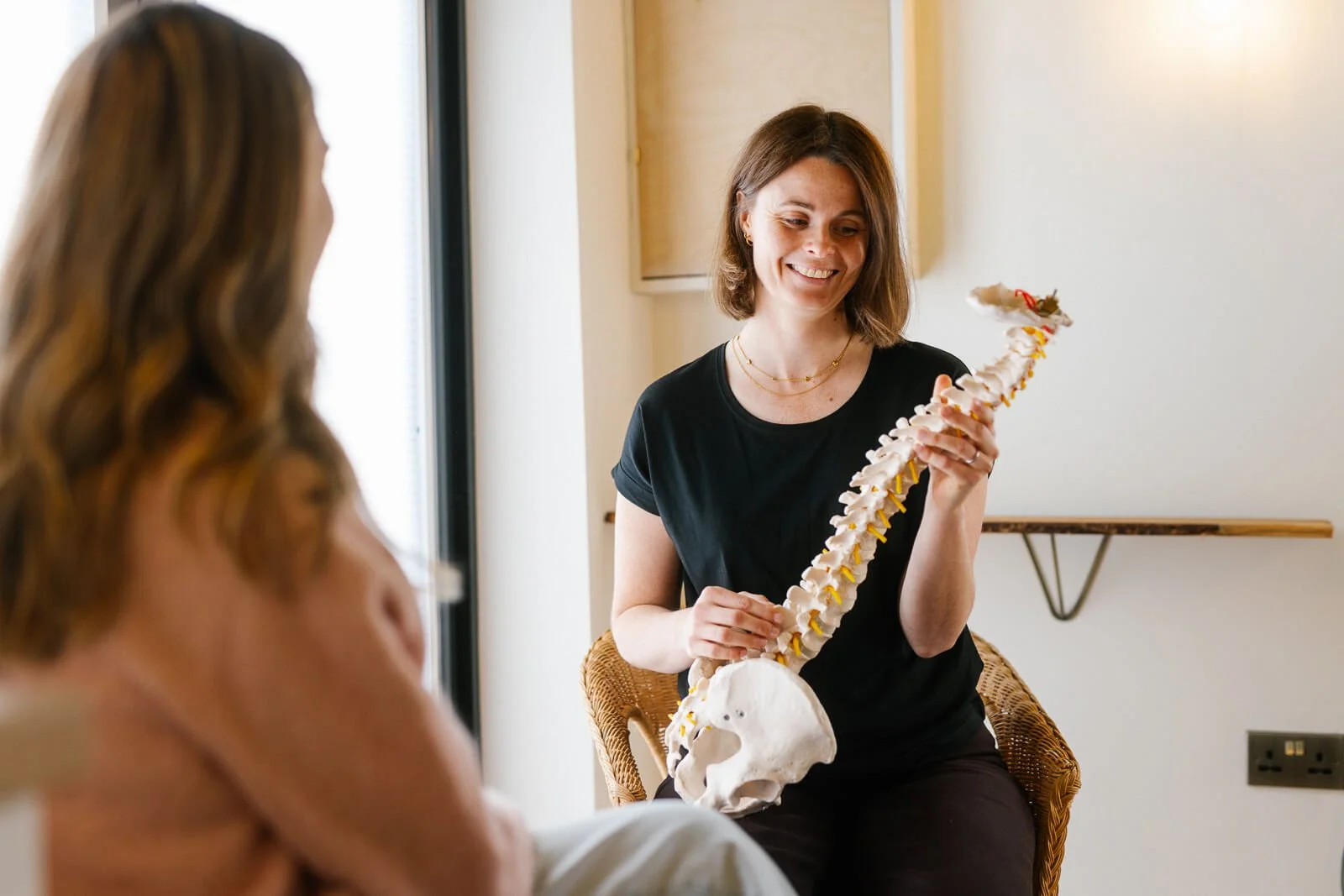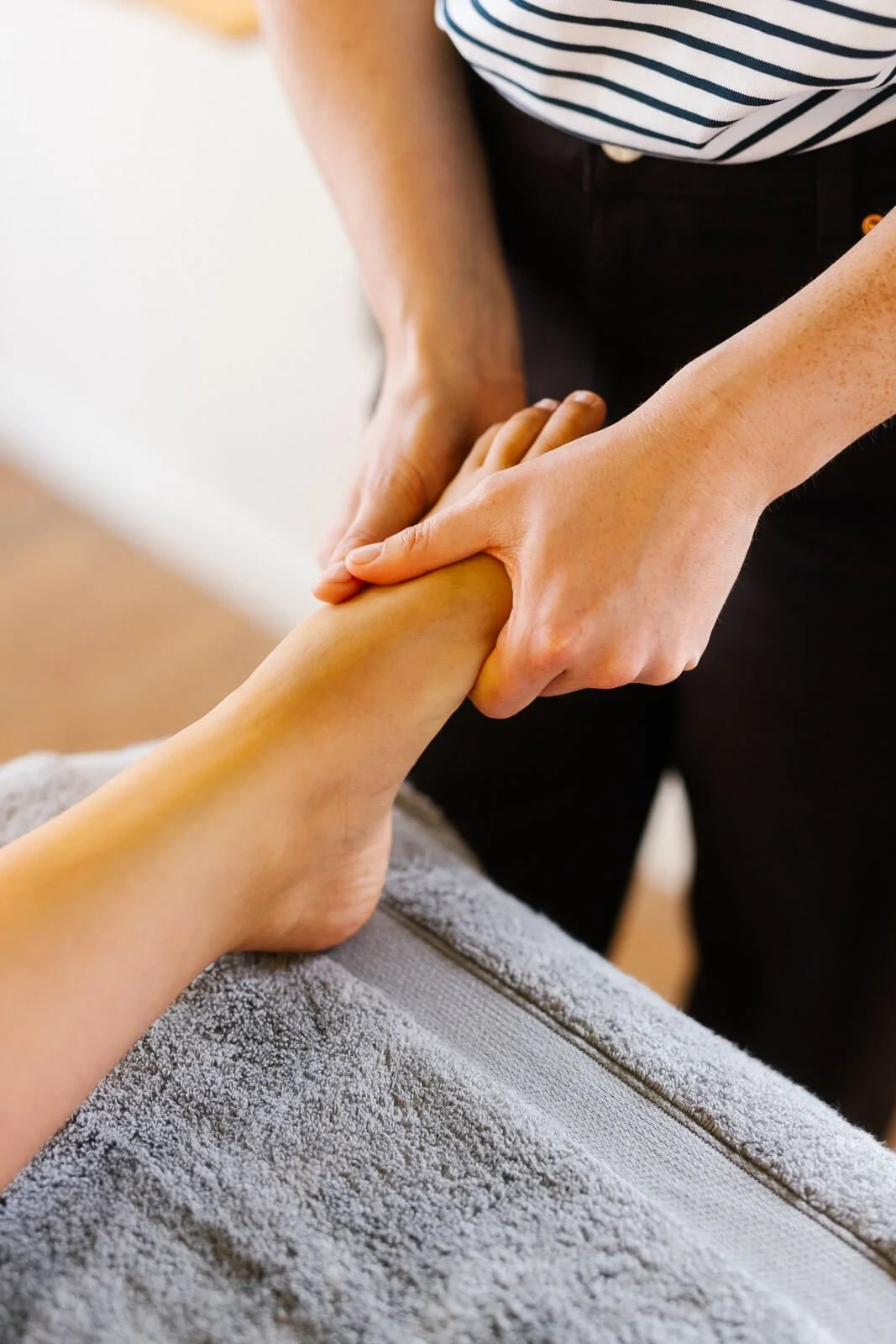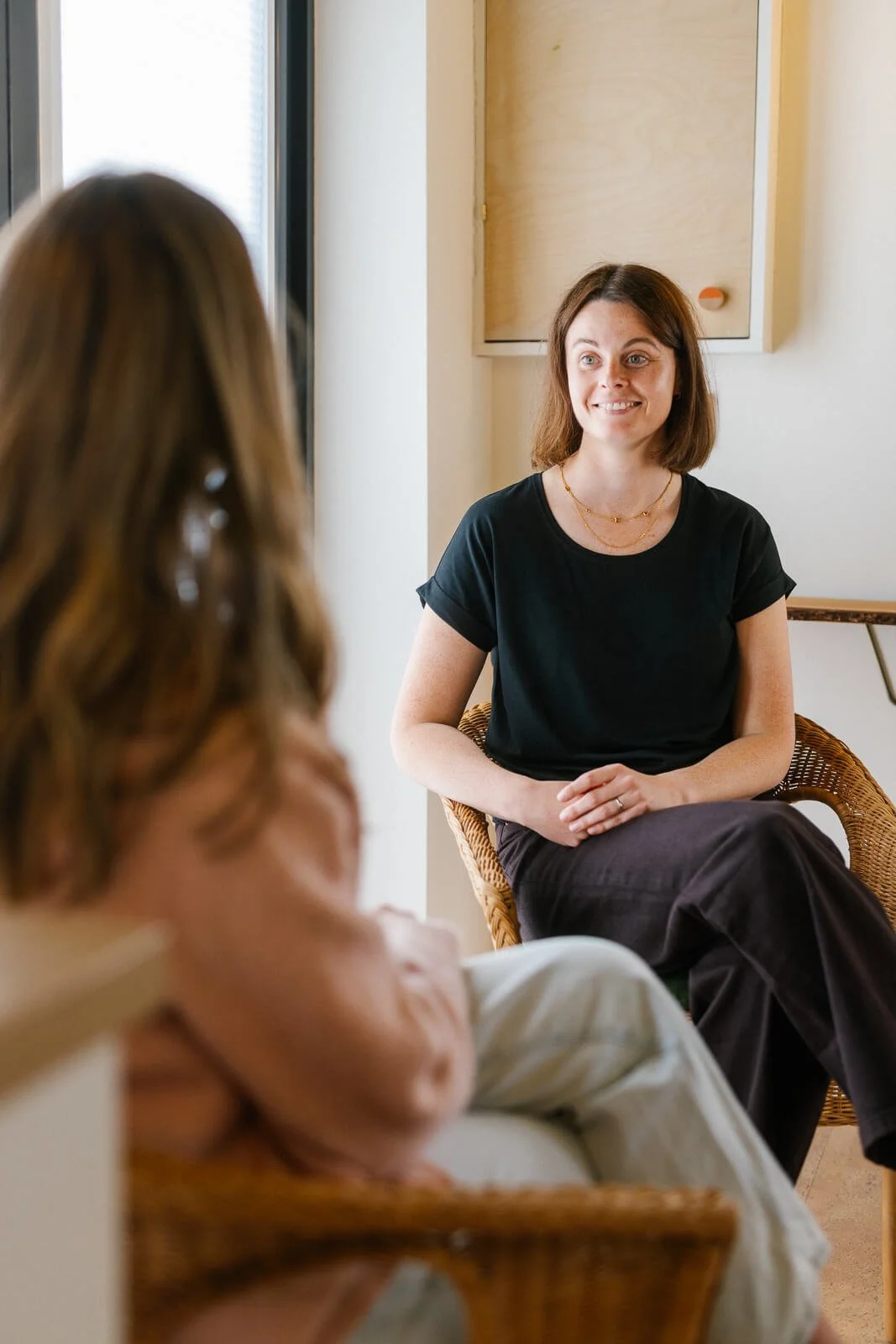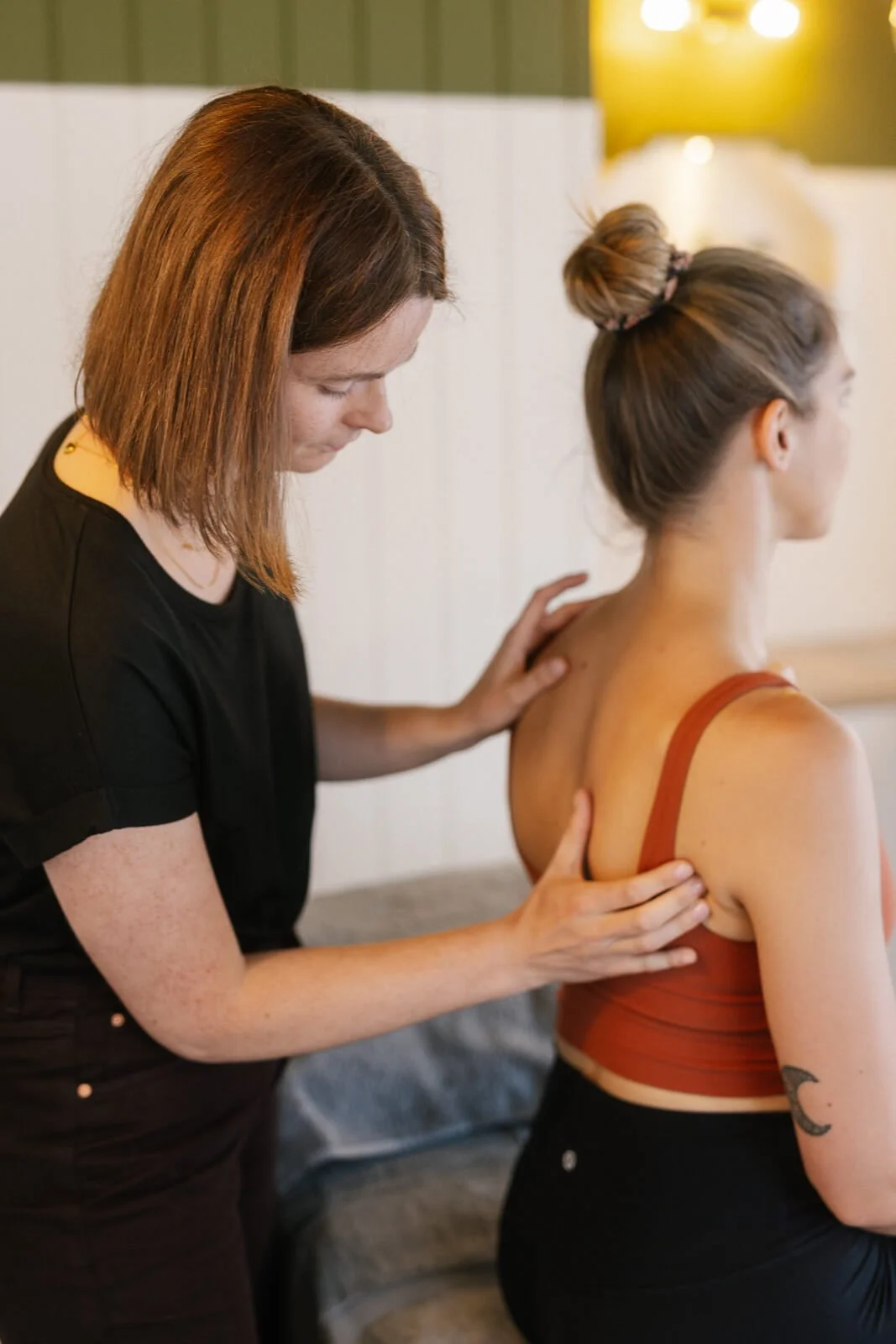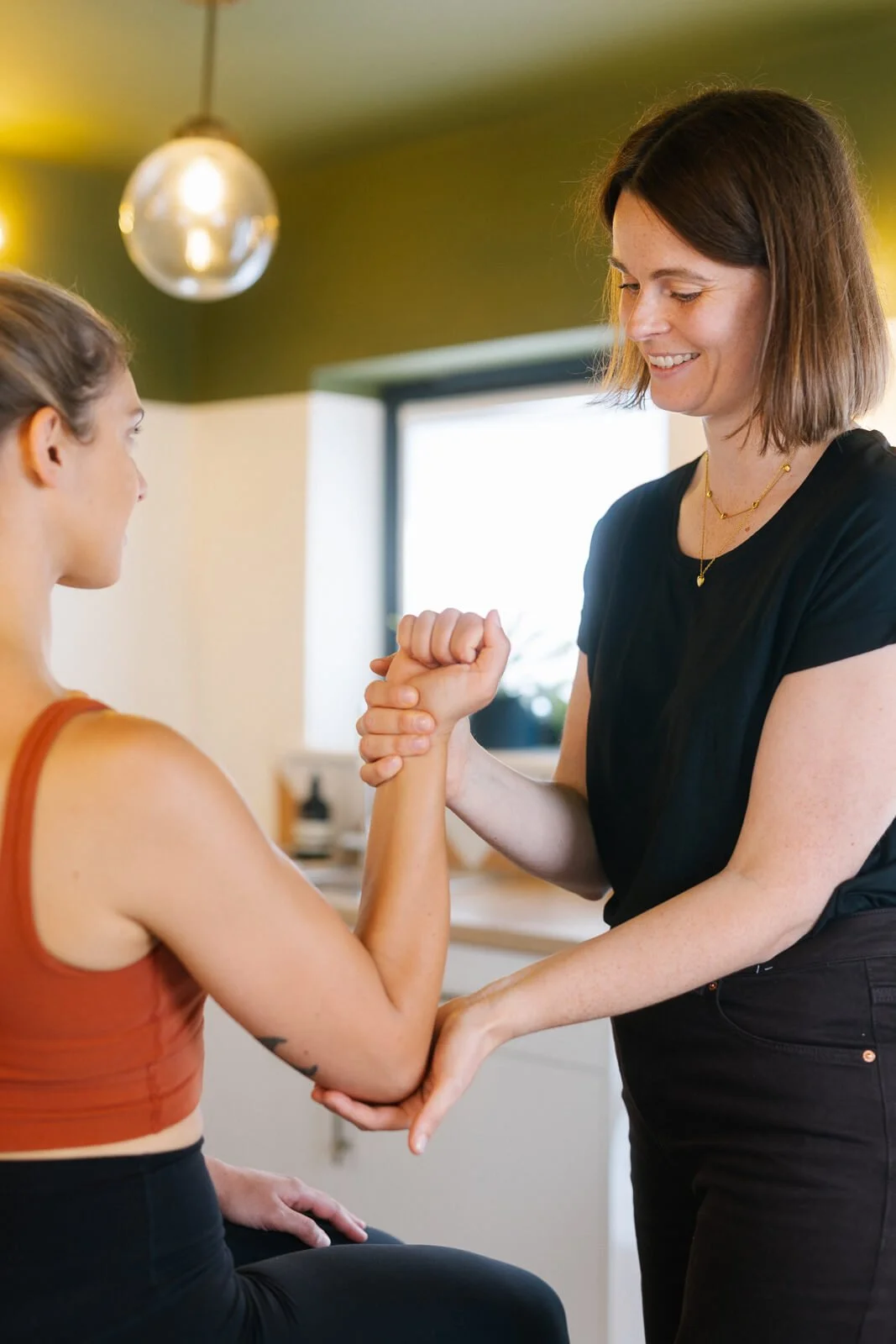Osteopathy Treatment in Cornwall
Osteopathy treatment minutes from Cornwall’s North Coast, Newquay TR7, TR8, Truro TR1, St Austell PL25 & surrounding areas.
Looking for a trusted Osteopath in Newquay, Truro, St Austell or the surrounding areas? Find us at The Hide, Lanteague Studios, Zelah.
As a fully qualified female osteopath, I provide professional, hands-on treatment tailored to your needs. Based in Cornwall, I work with patients from across Newquay, Truro, St Austell, and nearby areas who are seeking effective care for musculoskeletal pain, stiffness, and overall physical well-being.
Osteopathy Prices
Initial
Appointment
From £70
Follow up - 30 mins
Appointment
From £50
Follow up - 45 mins
Appointment
From £70
What is Osteopathy?
Osteopathy is a form of hands-on therapy that focuses on the muscles, joints, and connective tissues to improve movement, reduce pain, and support the body’s natural healing. Osteopaths work to identify the underlying causes of discomfort rather than just treating symptoms. Whether you’re struggling with back pain, neck stiffness, sports injuries, or simply want to improve your physical health, we offer safe, personalised treatment in a calm and supportive environment. Our goal is to help you move with ease, restore balance, and feel your best. If you’re searching for an osteopath in Newquay, Truro, St Austell, or the surrounding areas of Cornwall, we’d be delighted to welcome you and discuss how osteopathy can support your health and wellbeing.
What can osteopaths treat?
Osteopathic treatments are always tailored to each individual, whether your dealing with a recent injury, ongoing pain, or simply want to improve your over wellbeing. Osteopathy is a safe, hands-on approach to healthcare that can support people experiencing a wide range of conditions, including:
Sports Injuries
Muscle Spasms
Repetitive Strain Injuries
Tennis Elbow & Golfers Elbow
Shoulder, Arm and Wrist Pain
Hip, Knee, Ankle and Foot Pain
Headaches arising from the neck
Pain Related to Postural Changes in Pregnancy
Sciatica
Neuralgia
Neck Pain
Joint Pains
Fibromyalgia
Arthritic Pain
Low Back Pain
Frozen Shoulder
Where is Release Osteopathy?
Serving Newquay, Truro, St Austell & Surrounding Areas
Find us at:
⚲ The Hide, Unit 1 Lanteague Studios, Scotland Road, Zelah, TR4 9JG
Release Osteopathy is based at The Hide, Lanteague Studios in Zelah, ideally located between Newquay and Truro. Our Central Cornwall setting makes if simple for patients from mid-Cornwall and the surrounding towns and villages to reach us for professional osteopathic care.
If you’re looking for a trusted osteopath near Newquay, Truro, St Austell or nearby areas, we’re here to provide expert, personalised treatment to support your health and wellbeing.
Your first osteopathy session at Release Osteopathy in Newquay, Cornwall typically lasts 45–60 minutes.
During this initial visit, you will receive a comprehensive consultation and assessment, where we discuss your medical history, current symptoms, and lifestyle factors. This allows us to create a personalised treatment plan tailored to your needs. If appropriate, treatment may be provided during the same session using gentle, hands-on osteopathic techniques. Whether you are seeking care for back pain, neck stiffness, joint discomfort, or other musculoskeletal issues, our goal is to help you reduce pain, improve mobility, and support overall wellbeing.
We welcome patients from Newquay, Truro, St Austell, and surrounding areas of mid Cornwall, providing professional osteopathic care in a calm and supportive environment. For more information on your first osteopathic appointment click the drop down buttons below.
What to expect during your first appointment
-
At your first initial consultation a thorough case history will be taken. This is so that the osteopath can investigate the cause of the problem and the factors that may contribute to your symptoms. Your osteopath may also ask you some questions about your medical history. This is to get a full overview of you and your health.
-
During the examination stage an in depth postural assessment and orthopaedic testing will be carried out. This helps in formulating a working diagnosis and aids in the creation of an osteopathic treatment plan that is tailored specifically to your needs. Your osteopath will take time explaining to you what they think is causing your symptoms. In some cases further imagining or tests may be needed. If this is required your osteopath will give you information and advice on how to do this and will support you during the process.
-
After discussing your working diagnosis, the initial consultation will conclude with some osteopathic treatment (if deemed appropriate). This will include a variety of hands-on techniques including; joint manipulation and mobilisation, stretching and soft tissue work. The aim of these techniques is to improve joint mobility, promote healing and reduce pain, all to help restore the body back to its natural functioning. Along with hands-on treatment your osteopath may also prescribe you some exercises and advise you on lifestyle and nutritional recommendations. The aim of this advice is to help you maintain your progression outside of the treatment room.
-
Your osteopath will monitor your progress and adjust your treatment plan as needed. The number of sessions depends on your condition, how you respond to treatment, and your recovery goals, ensuring you get the right care for long-term health and wellbeing.
Osteopathy Prices
Initial
Appointment
From £70
Follow up - 30 mins
Appointment
From £50
Follow up - 45 mins
Appointment
From £70
What qualifications do osteopaths have?
To become a qualified osteopath, practitioners must complete a four-year full-time honours degree (bachelor’s or master’s), including at least 1,000 hours of supervised clinical practice.
Before practising in the UK, osteopaths must be licensed and registered with The General Osteopathic Council (GOsC). Under the Osteopath Act 1993, it is illegal to call oneself an osteopath without completing approved training.
The GOsC regulates the profession, ensuring all osteopaths follow strict professional standards and complete 90 hours of continuing professional development (CPD) every three years.
At Release Osteopathy, all our practitioners are fully GOsC-registered, giving you confidence in their training, expertise, and professional standards.
Low back pain is extremely common, but the good news is that the lower back is a strong and resilient structure designed to support and move us through life. Most episodes of low back pain are caused by temporary strain and recover well with the right care, movement, and awareness.
At Release Osteopathy, we help people not only find relief from low back pain but also understand how to keep their backs healthy and strong for the long term.
Where Is the Low Back?
The low back, or lumbar spine, sits between your rib cage and pelvis. It’s made up of five vertebrae supported by discs, joints, ligaments, and powerful muscles. Together, these provide both stability and flexibility, allowing you to move freely and confidently.
Because the lumbar spine carries much of your body’s weight, it can sometimes become sore or irritated but this doesn’t mean it’s weak. Most back pain is the result of minor mechanical strain, not serious injury.
Common Causes of Low Back Pain
Low back pain can develop for many reasons, including:
Muscle or ligament strain from overuse or awkward movement
Joint stiffness or irritation
Disc irritation causing local or nerve-related discomfort
Postural stress from long periods of sitting, driving, or standing
Lifestyle factors such as reduced movement, stress, or poor sleep
How Osteopathy Can Help
At Release Osteopathy, we see the back as strong, adaptable, and responsive. Osteopathic treatment focuses on restoring ease of movement, reducing muscle tension, and improving circulation to help your body heal naturally.
After completing a thorough case history and assessment to fully understand the cause of your low back pain, your osteopath will use gentle hands-on techniques, joint mobilisation, and tailored movement advice to strengthen your back and help prevent recurrence. They will also assess how other areas, such as the hips or upper back, may be influencing your symptoms to achieve lasting results.
Ready to Move Forward?
If you’re experiencing low back pain or stiffness, we’re here to help. Our friendly osteopaths will assess your posture, movement, and influencing lifestyle factors to create a treatment plan focused on both relief and prevention.
Book your appointment with Release Osteopathy today and start your journey towards a stronger, more comfortable lower back.
Want to learn more about the causes, treatment options, and how osteopathy supports recovery? Read our full blog post on Low Back Pain
Understanding Low Back Pain
Causes, Treatment, and How Osteopathy Can Help
Neck discomfort is something many people experience at some stage, whether from long hours at a desk, stress, or simply day-to-day tension. The encouraging news is that the neck is a remarkably strong and mobile part of the body, built to support the head and allow a full range of movement.
While neck pain can feel limiting, it’s often the result of temporary tightness, stiffness, or strain rather than serious injury. With the right balance of movement, posture awareness, most people notice significant improvement and return to comfortable, confident movement.
At Release Osteopathy, we focus on helping you find lasting relief while also improving how your neck, shoulders, and upper back work together.
Anatomy of the neck
Your neck, also known as the cervical spine, connects your head to your upper back and is made up of seven vertebrae (C1–C7). These vertebrae are supported by joints, ligaments, discs, and layers of muscles that work together to keep your head upright and your movements smooth.
Because the neck needs to stay both strong and flexible, it can sometimes become overworked or irritated especially with modern lifestyle factors such as screen use, driving, or poor posture. With gentle treatment and the right advice, most neck issues resolve well.
Common Causes of Mechanical Neck Pain
Neck pain can arise for many reasons sometimes from a single event, such as sleeping awkwardly or a sudden movement, and sometimes from a gradual build-up of strain. Contributing factors can include:
Muscle tension related to stress, posture, or prolonged screen time
Joint stiffness or irritation within the cervical spine
Repetitive strain from activities such as desk work or driving
Whiplash-type injuries following a fall or accident
Tension from surrounding areas, such as the shoulders or upper back
Lifestyle factors, including lack of movement, stress, or poor sleep quality
Sometimes, neck pain may be accompanied by headaches, shoulder tension, or discomfort radiating into the arms. These symptoms often improve once the underlying mechanics of the neck and surrounding tissues are addressed. This is why a thorough case history and physical examination are so important they allow your osteopath to fully understand the cause and contributing factors behind your neck pain and provide the most appropriate treatment for your needs.
How Osteopathy Can Help My Neck Pain?
At Release Osteopathy, our approach focuses on helping your neck move more freely, easing tension, and improving balance throughout the spine and shoulders.
Your osteopath will begin with a comprehensive case history and physical assessment, exploring not just your neck but how other areas such as your upper back, jaw, shoulders or posture may be contributing. We’ll also ask questions about your general health to rule out any underlying conditions that could be influencing your symptoms.
Treatment may include a combination of gentle hands-on techniques, soft tissue release, and joint mobilisation to restore movement and reduce discomfort. You’ll also receive tailored advice on posture, desk ergonomics, and simple exercises to maintain mobility and prevent recurrence.
Ready to Move Forward to find out how Release Osteopathy can help with your Neck Pain?
If you’re experiencing neck pain, stiffness, or reduced mobility, we’re here to help. Our experienced osteopaths will take time to understand your unique situation and create a treatment plan that supports both recovery and long-term neck health.
Book your appointment with Release Osteopathy today and start feeling more comfortable, mobile, and confident in your movement.
Want to learn more about what causes neck pain and how osteopathy can help? Read our full blog post on Neck Pain
Understanding Neck Pain
Causes, Treatment, and How Osteopathy Can Help
FAQs
-
Osteopathy is a form of non-invasive manual therapy that focuses on treating the cause of your pain and discomfort rather than just its symptoms.
-
Osteopathy is recognised by NHS England as an allied health profession, joining physiotherapy as practitioners who hold degrees, practise independently, and are subject to regulation. To become certified, osteopaths must complete a 4-year, full-time programme leading to an honours degree ( bachelors or masters). This includes one thousand hours of clinical practise. Before an osteopath can legally practise in the UK, they must make contact with the General Osteopathic Council (GOsC), which grants professional licences and approval. According to the Osteopath Act of 1993, it is illegal to call yourself an osteopath unless you have received training from a recognised institution.
-
The goal of osteopathy is to identify the underlying cause of your symptoms, and treatment is individualised for each patient. To create the best possible environment for your body, your osteopath will employ a variety of treatment modalities, such as soft tissue techniques, joint mobilisation, stretching, and spinal manipulation. This is done to support the body's natural capacity to heal itself.
-
Both osteopathy and chiropractic are evidence-based practises. The primary distinction between an osteopath and a chiropractor is that the chiropractor focuses primarily on the spine and spinal adjustments to facilitate optimal nerve transition. Osteopaths, on the other hand, treat the entire body and employ a variety of techniques such as soft tissue release, spinal adjustments, stretching, and exercises.
-
Your osteopath will discuss the number of treatments you are likely to require during your initial consultation. This is based on the osteopath's previous experience of treating your condition. The average number of treatments required is around 5, but this can vary from person to person due to individual treatment responses and the type of condition being treated.
-
Feeling comfortable during your osteopathy appointment is essential for effective treatment. We recommend wearing loose, comfortable clothing that allows your osteopath to easily assess movement and posture. If you’re attending for hip, knee, or ankle pain, bringing a pair of shorts will make the examination and treatment more convenient.
-
A thorough case history will be taken during your initial consultation. This allows the osteopath to look into the root of the problem and the factors that may be contributing to your symptoms. Your osteopath may also question you about your medical history. This is to get a complete picture of you and your health. The examination phase will include an extensive postural evaluation and orthopaedic testing. This facilitates the formulation of a working diagnosis and the creation of a personalised osteopathic treatment plan. In some circumstances, further testing or imagining may be necessary. If this is required, your osteopath will inform you, give you suggestions for how to proceed, and support you all the way through the procedure. Your working diagnosis will be discussed, and the initial consultation will end with some osteopathic treatment (if deemed appropriate). This will involve a variety of manual methods, including soft tissue work, stretching, and joint manipulation and mobilisation. These methods aim to increase joint mobility, encourage healing, and lessen pain in order to assist the body in resuming its normal functions. Your osteopath may suggest exercises, as well as changes to diet and lifestyle, in addition to providing hands-on care. This guidance is intended to help you continue making progress outside of the treatment setting.
-
Osteopaths do not only treat backs, despite widespread misconceptions. The list below highlights a few of the condition’s osteopaths can treat:
Arthritic Pain
Sports Injuries
Headaches Related to Muscle Tension
Repetitive Strain Injuries
Joint Pains
Low Back Pain
Neck Pain
Pain Related to Postural Changes in Pregnancy
Fibromyalgia
Muscle Spasms
Shoulder, Arm and Wrist Pain
Hip, Knee, Ankle and Foot Pain
-
To provide an optimal environment for your body, your osteopath will employ a variety of treatment modalities such as spinal manipulation, joint mobilisation, stretching, and massage. This is to support the body's natural ability to heal itself.
-
Both osteopathy and physiotherapy are evidence-based practises. Both receive extensive training in anatomy, physiology, pathology, and practical skills. In the UK, most physiotherapists receive their education through the NHS and complete rotations in the fields of musculoskeletal, neurological, cardiology and respiratory health. Osteopathic training focuses on musculoskeletal health, and practitioners are well-versed in the application of spinal and joint manipulation, which is a core component of their four-year training. Osteopaths are more likely to work with their hands. Physiotherapists use exercise prescription and other modalities such as ultrasound and electrotherapy. But both professionals can take advantage of a variety of postgraduate courses and CPD courses to get trained in a multitude of techniques.
Why Choose Release Osteopathy?
At Release Osteopathy, we combine clinical expertise with a patient-focused approach. Our GOsC-registered osteopaths provide evidence-based treatments tailored to your needs.
We integrate osteopathy with Clinical Pilates, massage therapy, and lifestyle guidance, ensuring a comprehensive approach to musculoskeletal health. Our goal is to relieve pain and empower you to maintain your well-being long-term.





